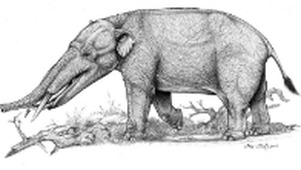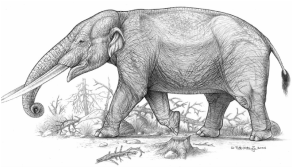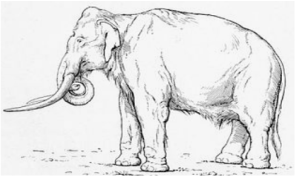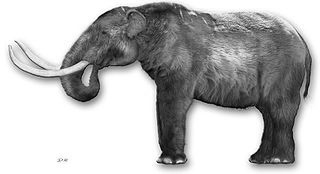Proboscideans of ABDSP.
For a more detailed description of the proboscideans found in the Anza-Borrego State Park see,
"Fossil Treasures of the Anza Borrego Desert",
George T. Jefferson and Lowell Lindsay, editors, Sunbelt Publications, San Diego California, 2006.
"Fossil Treasures of the Anza Borrego Desert",
George T. Jefferson and Lowell Lindsay, editors, Sunbelt Publications, San Diego California, 2006.






